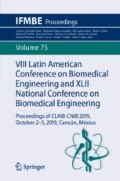Abstract
Unsupervised learning methods are commonly used to perform the non-trivial task of uncovering structure in biological data. However, conventional approaches rely on methods that make assumptions about data distribution and reduce the dimensionality of the input data. Here we propose the incorporation of entropy related measures into the process of constructing graph-based representations for biological datasets in order to uncover their inner structure. Experimental results demonstrated the potential of the proposed entropy-based graph data representation to cope with biological applications related to unsupervised learning problems, such as metagenomic binning and neuronal spike sorting, in which it is necessary to organize data into unknown and meaningful groups.
Access this chapter
Tax calculation will be finalised at checkout
Purchases are for personal use only
References
Vogt, J.E.: Unsupervised structure detection in biomedical data. IEEE/ACM Trans. Comput. Biol. Bioinforma. 12(4), 753–760 (2015). https://doi.org/10.1109/TCBB.2015.2394408
Xu, R., Wunsch, D.C.: Clustering algorithms in biomedical research: a review. IEEE Rev. Biomed. Eng. 3, 120–154 (2010). https://doi.org/10.1109/RBME.2010.2083647
Fortunato, S., Hric, D.: Community detection in networks: a user guide. Phys. Rep. 659, 1–44 (2016). https://doi.org/10.1016/j.physrep.2016.09.002
de Arruda, G.F., Costa, L.D.F., Rodrigues, F.A.: A complex networks approach for data clustering. Phys. A Stat. Mech. Appl. 391(23), 6174–6183 (2012). https://doi.org/10.1016/j.physa.2012.07.007
Zhang, H., Chen, X.: Network-based clustering and embedding for high-dimensional data visualization. In: 2013 International Conference on Computer-Aided Design and Computer Graphics, pp. 290–297. IEEE (2013). https://doi.org/10.1109/CADGraphics.2013.45
Grünwald, P.D.: The Minimum Description Length Principle. The MIT Press, Cambridge (2007)
Yao, J., Dash, M., Tan, S.T., Liu, H.: Entropy-based fuzzy clustering and fuzzy modeling. Fuzzy Sets Syst. 113(3), 381–388 (2000). https://doi.org/10.1016/S0165-0114(98)00038-4
Laskaris, N.A., Zafeiriou, S.P.: Beyond FCM: graph-theoretic post-processing algorithms for learning and representing the data structure. Pattern Recognit. 41(8), 2630–2644 (2008). https://doi.org/10.1016/j.patcog.2008.02.005
Blondel, V.D., Guillaume, J.L., Lambiotte, R., Lefebvre, E.: Fast unfolding of communities in large networks. J. Stat. Mech. Theory Exp. 2008(10), P10008 (2008). https://doi.org/10.1088/1742-5468/2008/10/P10008
Leung, H.C., Yiu, S.M., Yang, B., Peng, Y., Wang, Y., Liu, Z., Chen, J., Qin, J., Li, R., Chin, F.Y.: A robust and accurate binning algorithm for metagenomic sequences with arbitrary species abundance ratio. Bioinformatics 27(11), 1489–1495 (2011). https://doi.org/10.1093/bioinformatics/btr186
Ceballos, J., Ariza-Jiménez, L., Pinel, N.: Standardized approaches for assessing metagenomic contig binning performance from Barnes-Hut \(t\)-Stochastic neighbor embeddings. In: VIII Latin American Conference on Biomedical Engineering and XLII National Conference on Biomedical Engineering, pp. 761–768. Springer Nature Switzerland AG (2020). https://doi.org/10.1007/978-3-030-30648-9_101
Ariza-Jiménez, L., Quintero, O., Pinel, N.: Unsupervised fuzzy binning of metagenomic sequence fragments on three-dimensional Barnes-Hut t-Stochastic neighbor embeddings. In: 40th Annual International Conference of the IEEE Engineering in Medicine and Biology Society (EMBC), pp. 1315–1318. IEEE (2018). https://doi.org/10.1109/EMBC.2018.8512529
van der Maaten, L.: Accelerating t-SNE using tree-based algorithms. J. Mach. Learn. Res. 15, 3221–3245 (2014). http://jmlr.org/papers/v15/vandermaaten14a.html
Chaure, F.J., Rey, H.G., Quian Quiroga, R.: A novel and fully automatic spike-sorting implementation with variable number of features. J. Neurophysiol. 120(4), 1859–1871 (2018). https://doi.org/10.1152/jn.00339.2018
Pedreira, C., Martinez, J., Ison, M.J., Quian Quiroga, R.: How many neurons can we see with current spike sorting algorithms? J. Neurosci. Methods 211(1), 58–65 (2012). https://doi.org/10.1016/j.jneumeth.2012.07.010
Newman, M.E., Clauset, A.: Structure and inference in annotated networks. Nat. Commun. 7(May), 1–11 (2016). https://doi.org/10.1038/ncomms11863
Sharon, I., Morowitz, M.J., Thomas, B.C., Costello, E.K., Relman, D.A., Banfield, J.F.: Time series community genomics analysis reveals rapid shifts in bacterial species, strains, and phage during infant gut colonization. Genome Res. 23(1), 111–120 (2013). https://doi.org/10.1101/gr.142315.112
Acknowledgments
This research was supported by Centro de Excelencia y Apropiación en Big Data y Data Analytics -Alianza CAOBA- and Universidad EAFIT.
Author information
Authors and Affiliations
Corresponding author
Editor information
Editors and Affiliations
Ethics declarations
The authors declare that they have no conflicts of interest.
Rights and permissions
Copyright information
© 2020 Springer Nature Switzerland AG
About this paper
Cite this paper
Ariza-Jiménez, L., Pinel, N., Villa, L.F., Quintero, O.L. (2020). An Entropy-Based Graph Construction Method for Representing and Clustering Biological Data. In: González Díaz, C., et al. VIII Latin American Conference on Biomedical Engineering and XLII National Conference on Biomedical Engineering. CLAIB 2019. IFMBE Proceedings, vol 75. Springer, Cham. https://doi.org/10.1007/978-3-030-30648-9_41
Download citation
DOI: https://doi.org/10.1007/978-3-030-30648-9_41
Published:
Publisher Name: Springer, Cham
Print ISBN: 978-3-030-30647-2
Online ISBN: 978-3-030-30648-9
eBook Packages: EngineeringEngineering (R0)

